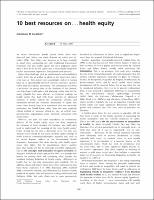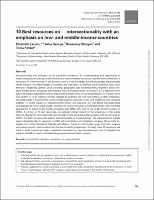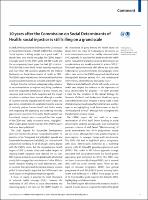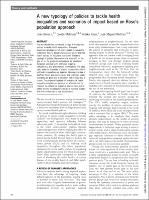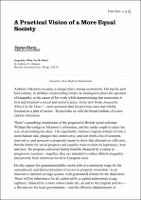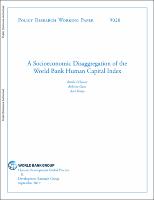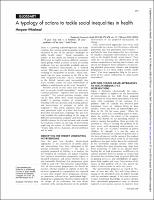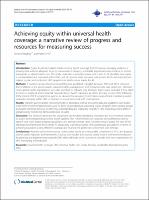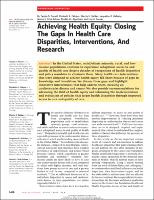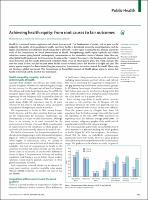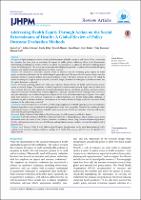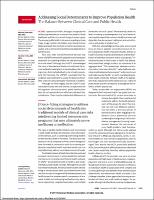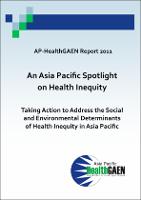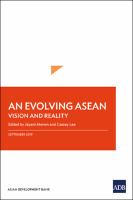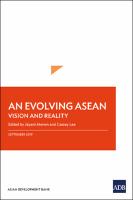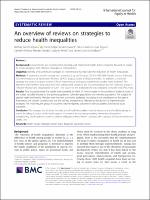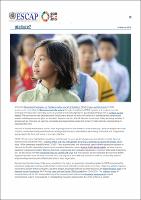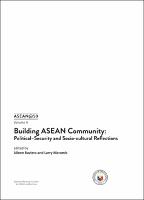Browsing 1. Health Equity by Title
Now showing items 1-20 of 157
-
10 best resources on ... health equity
(Oxford University Press in association with The London School of Hygiene and Tropical Medicine, 2007)
An astute bureaucratic pundit named Rufus Miles once observed that ‘where you stand depends on where you sit’ (Miles 1978). This ‘Miles Law’ deserves to be kept centrally in mind when considering not only traditional bureaucratic behaviour, but also health equity; for one's judgment about what's ‘best’ in the health equity area is unavoidably shaped by his/her institutional experience, background and interests.Rather than challenge such an unfortunately well-established reality, better for an author to admit at the outset just where (s)he has ... -
10 Best resources on… intersectionality with an emphasis on low- and middle-income countries
(Health Policy and Planning, 2016-10-01)
Intersectionality has emerged as an important framework for understanding and responding to health inequities by making visible the fluid and interconnected structures of power that create them. It promotes an understanding of the dynamic nature of the privileges and disadvantages that permeate health systems and affect health. It considers the interaction of different social stratifiers (e.g. ‘race’/ ethnicity, indigeneity, gender, class, sexuality, geography, age, disability/ability, migration status, religion) and the power structures that ... -
A new typology of policies to tackle health inequalities and scenarios of impact based on Rose's population approach
(Journal of Epidemiology and Community Health, 2013)
The last decade has witnessed a surge in interest for policies to tackle health inequalities. Adequate theoretical development of policy models is needed to understand how to design and evaluate equity-oriented health policies. In this paper we review Graham’s typology of policies (focused on the worst-off, on the gap, or on the gradient) and propose an adaptation (targeted, universal with additional targeting, redistributive, and proportionate universalism). For each type, potential scenarios of impact on population health and health inequalities ... -
A Practical Vision of a More Equal Society
(2015)
Toward a New Radical Reformism Anthony Atkinson occupies a unique place among economists. During the past half-century, in defiance of prevailing trends, he managed to place the question of inequality at the center of his work while demonstrating that economics is first and foremost a social and moral science. In his new book, Inequality: What Can Be Done?—more personal than his previous ones and wholly focused on a plan of action—he provides us with the broad outlines of a new radical reformism. -
A Practitioner’s Guide for Advancing Health Equity: Community Strategies for Preventing Chronic Disease
(2013)
The intention of A practitioner’s guide for advancing health equity is to help practitioners and leaders incorporate a health equity view in their collaborations with community organizations. It offers ideas — with stories to illustrate — for how public health organizations can develop competency in the important work of building organizational capacity, engaging communities, developing partnerships and coalitions, and making the case for health equity. Each of the four sections of the Practitioner’s guide (1. foundational skills, 2. tobacco-free ... -
A Socioeconomic Disaggregation of the World Bank Human Capital Index
(World Bank, Washington, DC, 2019-09)
This paper documents inequality in health and education outcomes by constructing an index of human capital disaggregated by quintiles of socioeconomic status (SES) for a sample 51 mostly low- and middle-income countries. The index measures the expected future human capital of children born today, following the methodology of the World Bank Human Capital Index that was launched in October 2018. Within-country disparities in human capital outcomes across SES quintiles are large, accounting for roughly one-third of the total variation. On average, ... -
A typology of actions to tackle social inequalities in health
(Journal of Epidemiology & Community Health, 2007) -
Achieving equity within universal health coverage: a narrative review of progress and resources for measuring success
(2014)
Introduction: Equity should be implicit within universal health coverage (UHC) however, emerging evidence is showing that without adequate focus on measurement of equity, vulnerable populations may continue to receive inadequate or inferior health care. This study undertakes a narrative review which aims to: (i) elucidate how equity is contextualised and measured within UHC, and (ii) describe tools, resources and lessons which will assist decision makers to plan and implement UHC programmes which ensure equity for all. Methods: A narrative review ... -
Achieving Health Equity: Closing The Gaps In Health Care Disparities, Interventions, And Research
(2016)
In the United States, racial/ethnic minority, rural, and lowincome populations continue to experience suboptimal access to and quality of health care despite decades of recognition of health disparities and policy mandates to eliminate them. Many health care interventions that were designed to achieve health equity fall short because of gaps in knowledge and translation. We discuss these gaps and highlight innovative interventions that help address them, focusing on cardiovascular disease and cancer. We also provide recommendations for advancing ... -
Achieving health equity: from root causes to fair outcomes
(The Lancet, 2007) -
Addressing Health Equity Through Action on the Social Determinants of Health: A Global Review of Policy Outcome Evaluation Methods
(Kerman University of Medical Sciences, 2018-02-06)
Background: Epidemiological evidence on the social determinants of health inequity is well-advanced, but considerably less attention has been given to evaluating the impact of public policies addressing those social determinants. Methodological challenges to produce evidence on policy outcomes present a significant barrier to mobilising policy actions for health equities. This review aims to examine methodological approaches to policy evaluation of health equity outcomes and identify promising approaches for future research. Methods: We conducted ... -
An Asia Pacific Spotlight on Health Inequity: Taking Action to Address the Social and Environmental Determinants of Health Equity in Asia Pacific
(2011)
In the full report we describe the extent of health inequities between and within countries across the Asia Pacific region. We explore the plausible causal relationships between social and environmental factors and health inequities and describe actions that are taking place to improve health inequities in Asia Pacific. The report is based on pre-existing data policy-mapping case studies and expert knowledge from across the region. We have drawn upon reports and peer-reviewed publications from a diversity of disciplines such as public health ... -
An evolving Asean: vision and reality
(Asian Development Bank, 2019-09)
This volume is a compilation of the papers presented at the High-Level Workshop on the Evolving Nature of ASEAN’s Economic Cooperation: Original Vision and Current Practice, containing the authors’ personal reflections on ASEAN’s journey toward economic integration. The papers review the historical evolution of ASEAN’s economic agenda, capture its achievements, examine the challenges that have surfaced in the last decade, and recommend a way forward. The papers in this volume emphasize that, while there have been notable successes, the remaining ... -
An Evolving ASEAN: Vision and Reality
(Asian Development Bank, 2019)
The formation of ASEAN in 1967 was originally driven by political and security concerns. In the decades that followed, ASEAN’s scope evolved to include an ambitious and progressive economic agenda. In December 2015, the ASEAN Economic Community (AEC) was formally launched. Although AEC has enjoyed some notable successes, its vision of economic integration has yet to be fully realized. The publication reviews the evolution of ASEAN economic integration and assesses the major achievements. It also examines the challenges that have emerged during ... -
An overview of reviews on strategies to reduce health inequalities
(2020-12)
Background: Governments are incentivized to develop and implement health action programs focused on equity to ensure progress with effective strategies or interventions. Objective: Identify and synthesize strategies or interventions that facilitate the reduction of health inequalities. Methods: A systematic search strategy was carried out up until August 2019 in MEDLINE (Ovid), Embase (Elsevier), Cochrane Database of Systematic Reviews, LILACS, Scopus, Scielo and Epistemonikos. In addition, a snowball strategy was used. Literature reviews (LRs) ... -
Are we REALLY getting everyone into the picture?
(2021-03-26) -
ASEAN @50Volume 4: Building ASEAN Community: Political-Security and Socio-cultural Reflections
(ERIA, 2017)
ASEAN has gradually built, on the basis of both shared interests and common principles and norms, various practices and mechanisms that helped prevent conflict among its members and allowed it to play an autonomous role in shaping the regional security architecture. Overcoming the member states' preoccupation with their own national concerns to give way to advocacy of collective interests has remained difficult, but progress is being made. Part A of this volume looks at the processes and dynamics, challenges, and opportunities of ASEAN ... -
ASEAN Community Progress Monitoring System 2017
(The ASEAN Secretariat, 2017)

